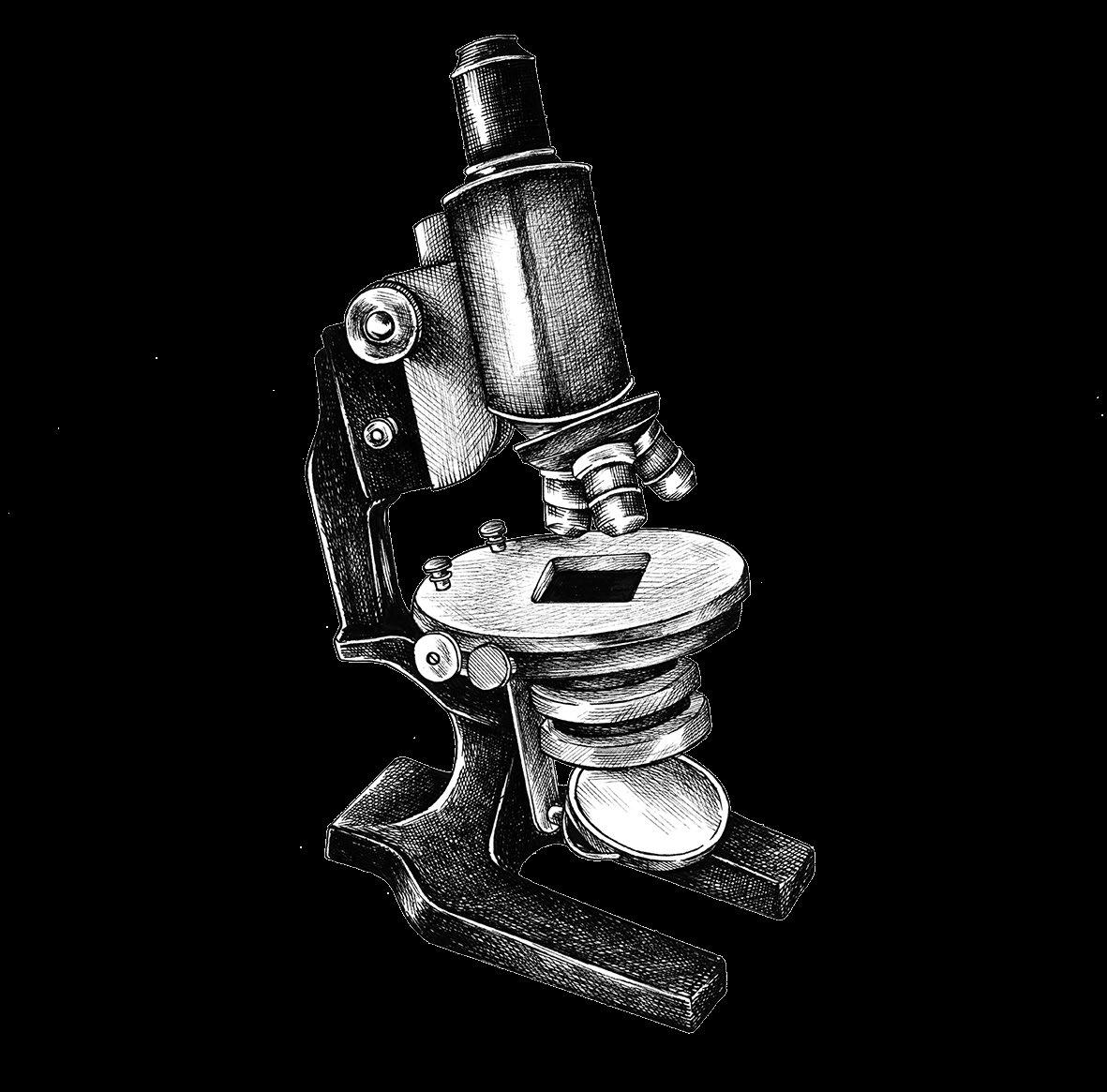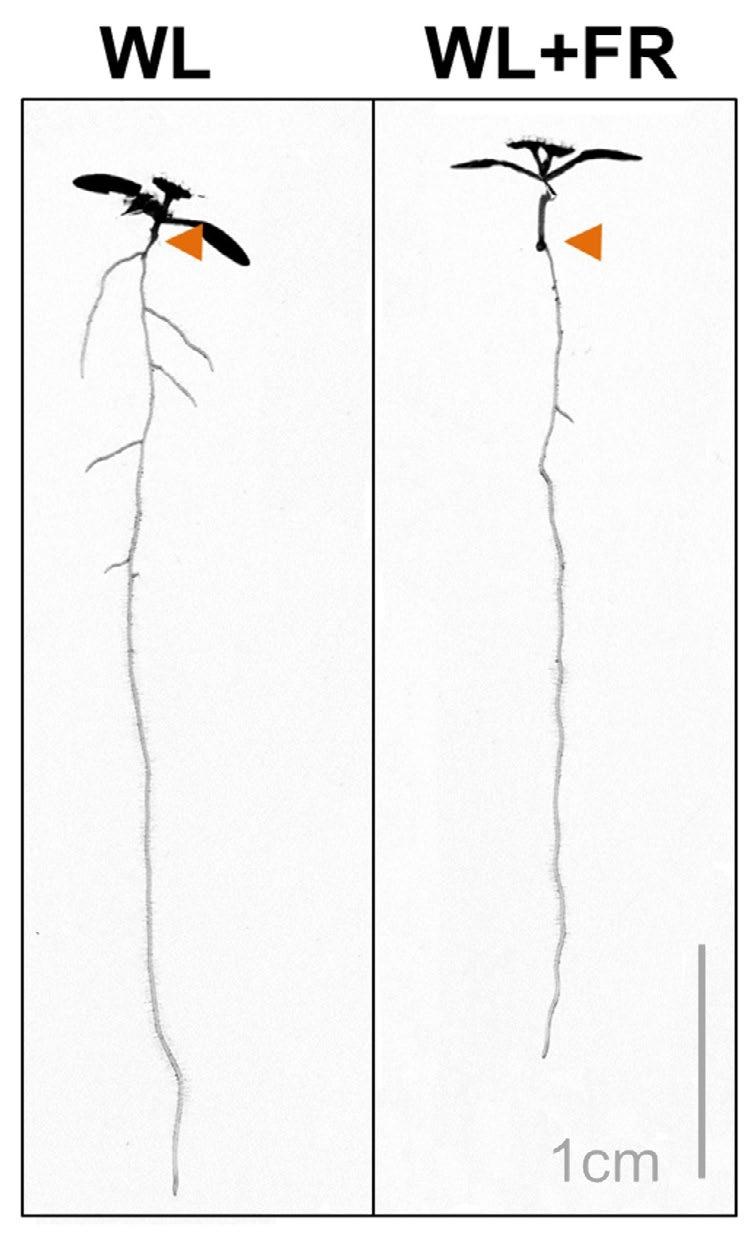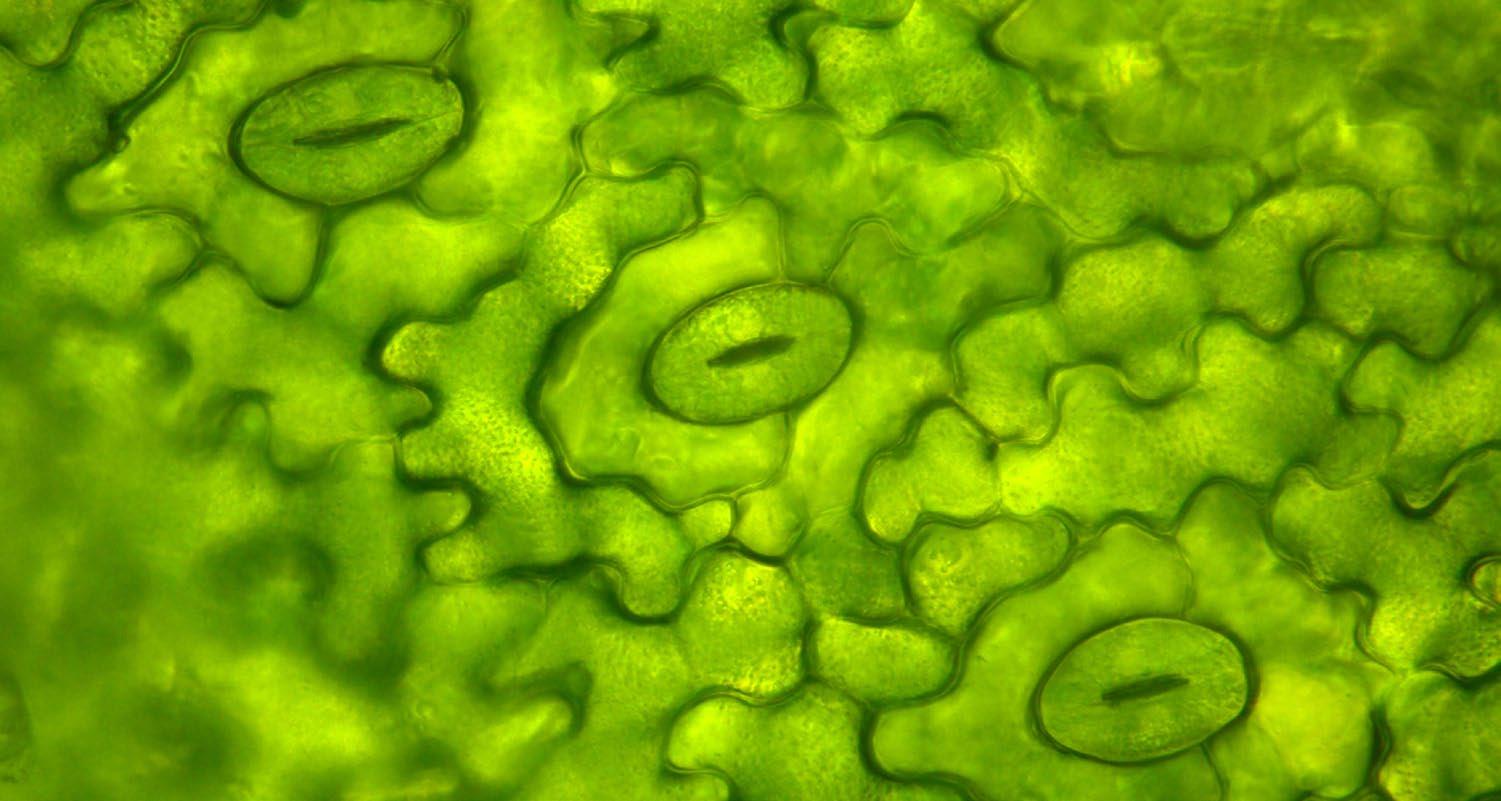
10 minute read
LOOKING ON THE BRIGHT SIDE
BY ALEX EVANS
Light is one of the most abundant natural resources on our planet, one that plays an important role in all manner of biological processes down at the cellular and molecular levels. Naturally, these processes are most commonly found in photosynthetic plant cells, where tiny changes in external light can have huge consequences for the organism as a whole. Let’s hear from some of the researchers highlighting these important cell–environment relationships.
The weird and wonderful relationships that light forms with living things means that we are still finding out how light influences biology right down at the cellular and molecular levels. Marie Hronkova is a plant physiologist at the Faculty of Science, South Bohemia University in České Budějovice, who is exploring the surprising role that light plays in the development of stomatal cells.
“The main area of my research is how plants cope with often unpleasant environmental conditions and how these conditions modify them”, explains Marie. “I am fascinated by the mechanisms that nature employs for survival.”
“During my PhD, I focused on the role of abscisic acid (ABA) in photosynthesis,” says Marie. “ABA is the main signal for stomatal opening and closing, but also for development of leaves and stomata cells in epidermis of new leaves.” It was around this time that Marie also became interested in the effects of light intensity on stomata development.
“Light is not only used as energy for photosynthesis but also provides important information for cells and for their behaviour,” she adds. “For this work, I closely followed the work of prestigious labs dealing with stomata development in the UK, Spain and especially in the United States.”
In 2010, two teams of researchers published research on a small protein called STOMAGEN, which is produced in the mesophyll of leaves, that was shown to help stomatal development,1,2 and Marie was keen to investigate the role it might be playing in light signalling. Thanks to Professor Ikuko Hara-Nishimura, who kindly supplied the seeds of their experimental mutants, Marie was able to further explore STOMAGEN. “The main message of our work was that elevated photosynthetic irradiation stimulates STOMAGEN expression, which positively regulates stomatal formation on both sides of the leaf,” she explains.3 “We were the first to show the important connection between light and STOMAGEN, but unfortunately, we didn’t know the mechanism at work.” Thankfully, more recent research has now revealed that the light-regulated transcription factor ELONGATED HYPOCOTYL 5 (HY5) directly binds to and activates STOMAGEN.4
To carry out her research, Marie uses a range of techniques that allow her to measure different functions of plant tissues. “I can measure physiological functions of the plants, photosynthesis and transpiration using gas exchange and fluorescence methods, and I have also used infrared cameras in my research,” she says. “Simultaneously, I can’t imagine my research without molecular biology methods like transcriptomic techniques using real-time reverse transcriptase PCR.” Marie and her team are continuing with their research on the interactions between light and stomatal development, and would like to focus on the possible consequences for plant immunity. “I really would like to thank the SEB, which celebrates its centenary this year, for the opportunity to present my research at the annual meetings (especially Gothenburg 2017 and Seville 2019), for a stimulating and friendly atmosphere there,” she concludes. “I am a proud and long-time member of this community!”
When Plants See Red
We often think of light as a combination of all the colours of the rainbow, but under certain conditions, parts of this rainbow are more plentiful than others. For photosynthetic organisms, the available wavelengths of light that they are exposed to can have interesting effects right down to the cellular level. Kasper van Gelderen is an independent group leader at the Centre for Organismal Studies at Heidelberg University in Germany, and he is working to improve our understanding of the role that the ratio of red to far red (R:FR) light plays in root development.
Kaspar was first intrigued by the role of light in root development during his PhD when he worked on the regulation of polar auxin transport, including the light-regulating transcription factor HY5.
“I got the opportunity to work in Utrecht in the group of Ronald Pierik on the problem of how
Left
Root growth of Aradopsis seedlings in the white light (WL) and white light plus far-red light (WL+FR), adapted from van Gelderen et al., 20187 root systems in competing plants get smaller,” he explains. “We knew that somehow there must be a shoot-to-root signal that relays the light quality information from the shoot to the root, and during our research this turned out to be HY5, bringing me back to my PhD work.”

As well as improving our understanding of the molecular mechanisms that drive wild plant growth, for those involved with agriculture and horticulture, finding the best way to grow plants has huge economic benefits. “Increased FR wavelengths, or a decreased R:FR ratio is usually indicative of plant–plant competition, given that FR light is reflected by chloroplasts,” Kaspar explains. “FR light is sensed by the plant via phytochrome photoreceptors, and they relay this light quality signal to downstream transcription factors.” Part of the value of Kaspar and his team’s research comes from their ability to create physiologically relevant situations in the laboratory, which allows them to reconstruct real-life phenotypes that they can study at the molecular and genetic level. “For example, when you do vegetable gardening, you have to thin out some of the young plants because they grow too small otherwise,” he explains. “This is due to R:FR signalling, and with the research we have done, we now understand the molecular basis of the limits of planting density.”
In order to create the right environmental conditions for this study, Kaspar and his team had to make sure that they could prevent light reaching the root while allowing extra FR light to reach the shoot.
“For that, we covered our square petri dishes with black paper and added an extra insert into the plate in order to create a small opening for the plants to grow through but minimise the light going to
Opposite Page
Leaf stomata under the microscope
Photo credit: Shutterstock.com the root compartment,” he says. They then used a program called SmartRoot to analyse their developing root systems semi-automatically and find out how their experimental conditions were affecting cellular growth. “Finally, we did expression analyses with micro-array and quantitative PCR to look at gene expression differences due to extra FR light,” he adds.

Kaspar’s research has shown experimentally how plants are able to change their root systems based on light cues picked up by their shoots. “A lot of people have asked me… why do plants do that?” he says. “Our best answer today is that they do this to conserve resources for shoot growth, because making lateral roots is very resource intensive.” In a follow-up study, they also combine the FR stimulus with nitrogen stress and show that with low nitrogen abundance, the plants will no longer reduce their root growth in response to FR ligth.
“I am now looking further into the mechanics and cell biology of HY5 transport,” says Kaspar. “There are several papers that have shown that HY5 transport is functionally relevant and HY5 is a small transcription factor, so it should be easier to move around—but how is that regulated, and how does it work in space and time?”
Simplifying The Complex
Light is a fundamental requirement for plants because it supplies the energy they need for growth and reproduction through photosynthesis. However, exposure to too much light can be problematic, and many organisms have developed mechanisms to modulate their photosynthetic activity to strike a balance between harvesting enough photons to live and dissipating excess light to avoid photodamage. One such group of mechanisms involves the light-harvesting complexes (LHCs), which are pigment-protein systems involved in absorbing photons. Roberta Croce, head of the Biophysics of Photosynthesis group at Vrije Universiteit in Amsterdam, has been researching the underlying molecular processes at work to help paint a clearer picture of the role that LHCs play in photosynthesis.
“I find it fascinating to understand the chemistry and physics behind biological processes,” says Roberta. “And, of course, it is hard to overestimate the importance that photosynthetic light harvesting had in shaping and supporting life on Earth.” As part of this research, Roberta and her team have recently demonstrated how LHCs can switch between different roles. “It is very intriguing that, in plants, the same pigment-protein complexes, the LHCs, can play opposite roles depending on the light conditions,” she says. “They absorb as many photons as possible in light-limiting conditions and dissipate as heat the excess energy absorbed in high light.”
As Roberta explains, the ability of organisms to protect themselves from over-exposure to light is a topic of much recent research, and a lot of this work is being conducted at the molecular and cellular level. “It is important to understand how photosynthetic organisms protect themselves; to harvest light and concomitantly produce oxygen is in principle very dangerous so sometimes they overdo it a bit to play safe,” she says. “It was shown that speeding up the quenching relaxation when light intensity decreases can lead to a substantial increase in plant productivity in the field.”
To fully investigate these LHCs, Roberta and her team utilise a suite of techniques that incorporate molecular biology, biochemistry, plant physiology and ultrafast laser spectroscopy. “This integrated approach allows us to analyse the problem from different angles and at different levels of complexity, from individual proteins to the leaf,” she explains. “For example, we can measure excitation energy transfer in the photosystems in the leaves with picosecond resolution and we can combine those with mutants that have modified pigment-binding sites or that lack individual complexes.” Alongside this, they are also able to analyse the composition and properties of the photosynthetic apparatus of the leaves, which helps them to understand what is going on in different conditions. organs.” While several attempts have been made to understand the molecular mechanisms that control SAS, Sara hopes that her research contributes to applications that can suppress this syndrome and improve crop yields.
Above Diagram of the phyosynthetic membrane containing the light-harvesting complexes, adapted from Croce and van Amerongen, 20178
Recently, Roberta and her team discovered that the presence of an antenna increases the photonto-electron conversion quantum efficiency of the photosystems, which is the opposite to what was anticipated.5 “The antenna is there to increase the absorption cross section of the photosystems, but usually this lowers the quantum efficiency,” she explains. “Normally, there is always a trade-off between absorbing more photons and efficiency, but instead, in those cyanobacteria, the antenna increases the absorption AND the efficiency—this was extremely surprising.”
Roberta’s interest in light harvesting certainly isn’t quenched and she has now begun work on lines of enquiry that she is keen to keep exploring. “In the last few years, we have started studying cyanobacteria that can use FR light for growth,” says Roberta. “FR light is outside the photosynthetic active radiation and was considered unable to drive oxygenic photosynthesis, but it is clearly used by many cyanobacteria strains and we want to know how they do it and see if we can also ‘convince’ plants to do it as well.”
How To Stay Shady
It’s not surprising that plant growth tends to be driven in favour of light over shade, given that light is required for healthy development, but this doesn’t always produce the best outcome for human-cultivated plants. In fact, this biological need to reach out towards the light can actually be a major issue for agriculture, but thankfully Sara Bunti, a Research and Education Assistant at Utrecht University in the Netherlands, is using genetic and molecular techniques to curb these instinctual patterns of growth known as shade avoidance syndrome (SAS).
“SAS consists of the elongation of petioles and internodes together with the upward movement of the leaves, called hyponasty, to escape from shade,” she explains. “From an agronomic point of view, this syndrome is mostly undesirable because the investments in the elongation process can go at the expense of the harvestable
I Am Fascinated By The Seemingly Abstract Workings Of The Inner Cell
After studying SAS as part of her PhD project in the group of Ronald Pierik at Utrecht University, Sara continued investigating this topic because the combination of physiology and biotechnology captured her interest, especially in the context of modern agriculture. “The increasing human population coupled to the increasing scarcity of arable land has demanded an intensification of plant cultures,” she explains. “This ultimately leads them to compete for light, which induces the undesirable trait known as SAS, and my research aims to show how the response of plants to different stimuli is highly regulated by a complex network of interactions by transcription factors.”
To achieve this, Sara and her team assessed how the typical traits of SAS responded to red light treatment, which is used to mimic vegetative shade. “I perform these studies in mutants in which candidate genes are knocked out or overexpressed using common techniques of gene cloning and gene editing,” she explains. “Moreover, I investigate this complex network of interactions through protein–protein and DNA–protein interaction techniques such as yeast two-hybrid, yeast one-hybrid, bimolecular fluorescence complementation, protein localisation and co-localisation studies.”
Through this multi-technique approach, Sara is able to analyse how the plants can modulate the strength of their shade responses and apply this to strategies for possible crop improvement.
One of the surprising findings of this research was that plants actually respond to shade by expressing genes involved in both elongation and the suppression of elongation simultaneously.
“The reason for this lies in the proposed gasand-brake mechanism composed by the different layers of interaction between proteins with opposite functions,”6 she says. “This describes a fine-tuned mechanism necessary to control the magnitude of the shade avoidance response in order to avoid an exaggerated elongation.”
Sara’s interest in this area is still growing and she is keen to explore the other ways in which light influences plant growth at various levels. “These days, we are very interested in understanding how heterogeneous light or shade signals can be integrated and how light perception by one leaf section can regulate responses elsewhere in the plant,” she says.
“We are also very interested in understanding how expression of specific regulators, such as the helix-loop-helix protein genes, is being controlled.”
Reference:
1. Sugano SS, Shimada T, Imai Y, et al. Stomagen positively regulates stomatal density in Arabidopsis. Nature 2010; 463: 241–244.
2. Kondo T, Kajita R, Miyazaki A, et al. Stomatal density is controlled by a mesophyllderived signaling molecule. Plant Cell Physiol 2010; 51: 1–8.
3. Hronková M, Wiesnerová D, Šimková M, et al. Light-induced STOMAGEN-mediated stomatal development in Arabidopsis leaves. J Exp Bot 2015; 66: 4621–4630.
4. Wang S, Zhou Z, Rahiman R, et al. Light regulates stomatal development by modulating paracrine signaling from inner tissues. Nat Commun 2021; 12: 3403.
5. Mascoli V, Bhatti AF, Bersanini L, et al. The antenna of far-red absorbing cyanobacteria increases both absorption and quantum efficiency of Photosystem II. Nat Commun 2022; 13: 3562.
6. Buti S, Pantazopoulou CK, van Gelderen K, et al. A gas-and-brake mechanism of bHLH proteins modulates shade avoidance. Plant Physiol 2020; 184: 2137–153.
7. van Gelderen K, Kang C, Pierik R. Light signaling, root development, and plasticity. Plant Physiol 2018; 176: 1049-1060.
8. Croce R, Van Amerongen H. Natural strategies for photosynthetic light harvesting. Nature Chem Biol 2014; 10: 492–501.











